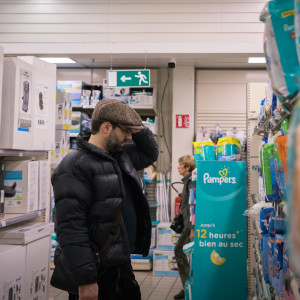More and more people are turning to gaming as a primary source of entertainment. Building a global gaming community that drives positive culture, diversity, and inclusivity has never been more critical.
With more than 3 billion gamers around the world today, improving the quality of the gamer experience through game localization is key to success.
Curious how to deliver a next-generation gaming experience to your global markets? Here are our top 3 takeaways and the latest trends in gaming localization from the Game Quality Forum 2022.
1. Get Regionally Specific.
Universal localization is one of the easiest ways to serve a wide audience. What is universal localization? Think: simplified Spanish in telenovela subtitles. Simplified Spanish is understood by people in a wide range of regions, so there is no need to regionalize and customize your content to your audiences speaking different types of Spanish.
Sounds ideal? Potentially, in certain situations. Unfortunately, the issue with universal localization is that while everyone understands it, no one truly connects with it. People may understand what’s being said, but it's probably not how your audience actually speaks in their everyday lives. In addition to Spanish, think about Arabic, Portuguese, and Chinese (just to name a few) with dozens of different dialects.
Universal localization might be quick and easy, but if you want to truly connect with your target audience, you need to hyper-localize your content instead. In gaming, you want to immerse your players in the world of the game!
Get as regionally specific as possible in your localization and game development process. That way, you help players resonate with the characters’ back stories to better bring them to life. Then, ensure that the localized version of your game properly tells these stories.
2. Invest in Automation and Remove Friction.
There are many moving parts and different stakeholders involved in the localization process. Remove friction as much as possible by getting everyone on board using a centralized localization tool that enables automation. Every department has human hours spent on tasks that can be automated that, over time, end up costing you more money.
One way you can automate your localization process is through automated translation workflows. You can configure your tasks in a translation management platform so that the tasks are initiated on their own through specific triggers. Here is an example of an automated translation workflow:
- Authorize the content for translation
- Translate the content
- Edit the translation
- Review the translation
- Publish the translation
Once you’ve set up a workflow, the platform keeps the content moving and automatically routes the completed translation to the next step. Your content will move constantly without human intervention, allowing you to translate more with less time and energy.
Another easy way to adopt automation into your process is using integrations. Pre-built integrations help you connect all of your business’ critical applications across the enterprise.
For example, a translation platform with design tool integrations can help your designers collaborate seamlessly with the localization team. They don't ever have to leave their familiar tools. It’s essential for the gaming industry, where you need to keep up with evolving content.
3. Localization and Quality Assurance Must Be Part of Development.
Most importantly, plan for localization and quality assurance early on in your game development and ideation stages. Don’t wait for the product team to ask you when you want to participate in the process – it will be too late. This way, you will save tremendous time and resources by reducing the overall number of bugs and revisions.
Localization teams have the power to offer other departments the opportunities to be more accessible, diverse, and inclusive and to get your games into new markets!
Additionally, languages and cultures are ever-evolving. Are you trying to ensure your content is accurate and the user experience remains relevant and resonating with the players? You need to listen to player communities and for their feedback.
Achieve High-Quality Gamer Experiences with Smartling
Smartling’s TMS is a powerful engine for those looking to automate and centralize video game localization efforts. And it’s the easiest way to centralize your game translation projects!
You can manage multiple translation agencies, workflows, and linguistic assets all in one platform. Plus, you have access to a number of out-of-the-box integrations with popular third-party authoring tools. Smartling’s full suite of localization services also helps you with human translation, subtitles, MT post-edit, re-formatting, and more.
Translate more game content at higher quality and at lower costs with Smartling. Book a meeting today!










